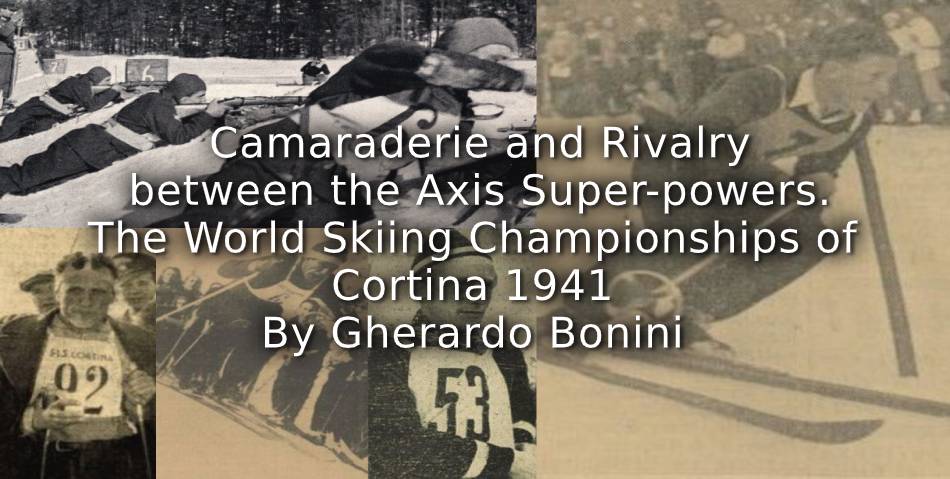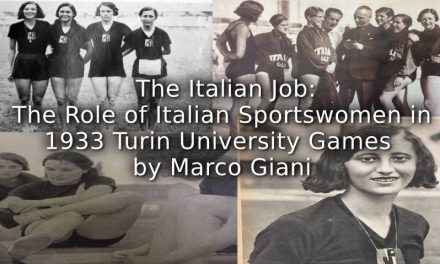The Congress of the International Ski Federation (FIS) of Oslo in March 1946 downgraded the World Championships held in Cortina d’Ampezzo from 1 to 10 February 1941 to a mere international event; while they recognized the high technical standard of the competition, they rejected its political origins, context and heritage. On a competitive level, the nations that had won medals at the previous edition of the World Championships in Zakopane, in 1939, were all present in Cortina, but only Randmund Soerensen, an athlete residing for years in Germany, represented Norway. The main Norwegian athletes, like the Ruud brothers and the cross-country skiers, boycotted the event and in the latter specialties the Swedes and Finns dominated. It is true that the Norwegian team had been reduced compared to the team in Zakopane, yet, Germany had gained success there thanks to the newly incorporated lands of Austria and the Sudetenland and its aggressive political and military manoeuvres; in 1939, Salzburg-based Bradl won the ski jumping and a representative of the annexed Sudetenland, Berauer, won the Nordic Combined.
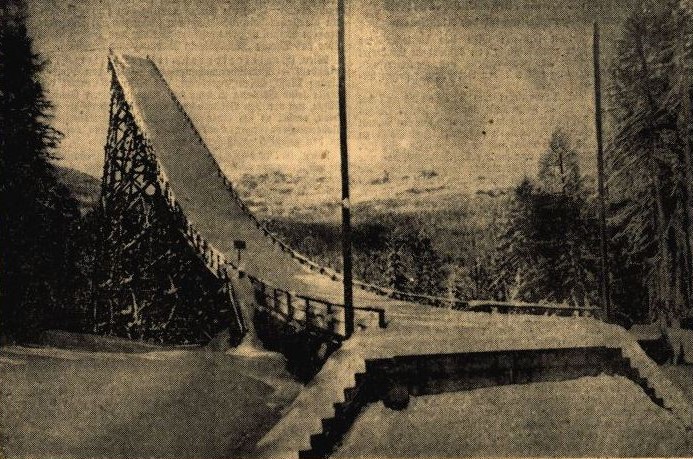
Cortina
Photogragh Weltbild
On a political level, the 1941 Championships represented the first event of the anticipated New Nazi-Fascist order in Europe in the field of sport. For leaders of the Axis powers, it was felt that Axis countries would dominate the new Europe racially, politically, economically and socially, and this was also true in the field of sport where sympathetic and neutral countries would also be admitted to competitions. By February 1941, Slavic countries, including a subjugated Czechoslovakia and destroyed Poland, had already partially disappeared under German advances and soon afterwards a diminished Soviet Union also disappeared from the political and sporting map. The organization of sporting events on the battlefield demonstrated the strength and power of the proponents of this new order. In Cortina, German joined Italian as the official language of the Championships. In the words of the Illustrazione italiana, the two main powers “have demonstrated the cohesion and normality of the European continent”. The war was a battle for supremacy, which also included supremacy over managing international sport. For its part, the German political newspaper Völkischer Beobachter (People’s Observer) affirmed that England’s presumed sporting power was “artificial” and that its people were not tested and built by means of “severe examinations”, unlike Germany’s population. With this perspective, it was no surprise that England was losing the war and consequently absent in the field of sport.
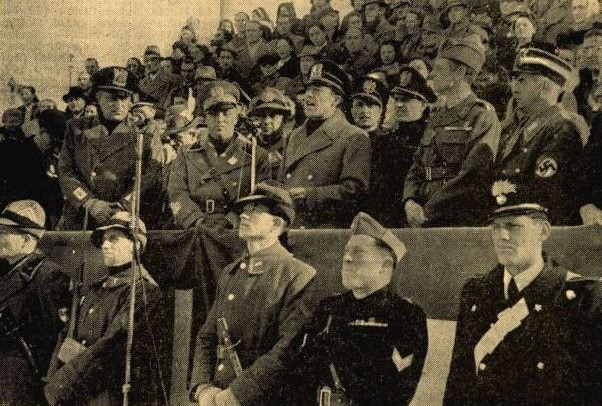
Inauguration
Photograph by Mann
The President of Italian Olympic Committee, Manganiello, inaugurated the Cortina event on February 1, in the presence of the FIS vice-president, the Swedish Count Hamilton and its executive board. Manganiello underlined the presence of the military representatives, a symbol of the readiness and awareness of the nations for the present moment. On the political side, the Championship served as a test for the alliance between the two driving sports powers, Italy and Germany. In addition to highlighting the presence of Axis ally Japan, who made their debut in the World skiing events of 1941, the press of the two countries were always generous with mutual congratulations and compliments, even if the will to excel was apparent in both. In Zakopane, Germany won 8 out of 12 competitions and in Cortina they defended that primacy, while Italy was strong in cross-country skiing, shown by the two bronze medals in the World relays of Chamonix 1937 and Zakopane .
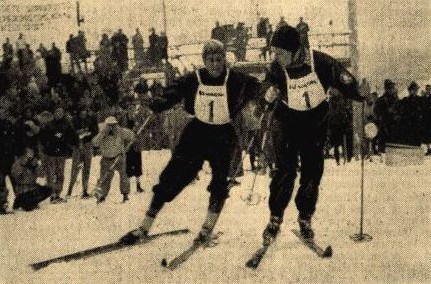
Demetz to Berauer Relay
Photograph by Mann
Italian-German camaraderie was even capable of overcoming the introduction of new technological innovations to the Championships, which permitted timing to one hundredth of a second. Representing Nazi Germany, the former Austrian, Pfeiffer, won the men’s slalom event with a time of 2.01.42 ahead of the Italian Chierroni in 2.01.48. Despite the difference in time, the jury sanctioned the race a tie and both competitors were ranked first with the time rounded to 2.01.5. At that time, therefore, the technological novelty was used only for greater precision rather than as a way to decide winners. While Italy got one more title, it lost the propaganda opportunity to claim a new era in the measurement of Alpine skiing.
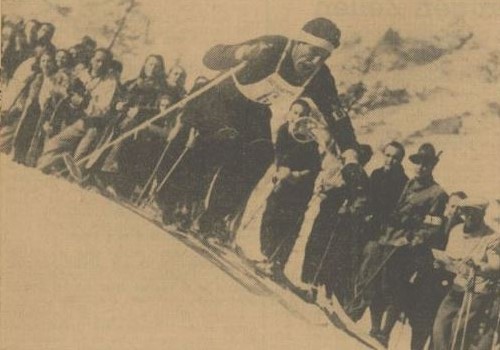
Chierroni Vittorio
Photograph byBlaha
One of the most interesting aspects of the Championship concerned the impact on both the international sports community and the Italian and German media of the new line-up of the German team, which included some South Tyrolean champions who had been Italian citizens. Vinzenz Demetz had won a bronze medal for Italy in the 1937 Chamonix cross-country 50 kilometres and in 1939 he had been the best Central European cross-country skier.
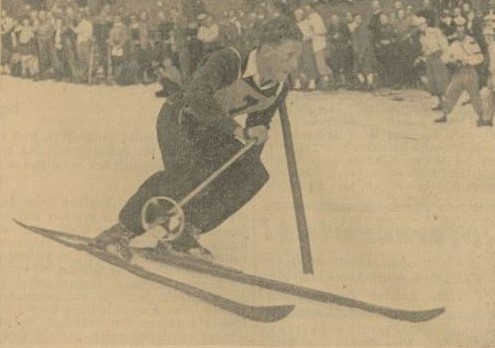
Pfeiffer Albert
Photograph by Weltbild
Hermann Azzolini, Gottfried Baur and Hans Kasebacher had all been Italian champions in individual or in team events. Other former Italian champions, such as Severino Menardi and Engelbert Senoner, had also opted for Germany, following the agreement of October 21, 1939 where Hitler and Mussolini agreed to a new policy concerning German South Tyroleans who were classed as Italian citizens against their will. This allowed any German-speaking inhabitants of the South Tyrol to emigrate to Germany, which was ready to give them work and accommodation. Of those who left, leaving their homes and places of birth, the majority chose to move to Austrian Tyrol. In sport, Italy lost some first-class alpine and cross-country skiers, like the mentioned above, who found a new home and new life in Innsbruck.
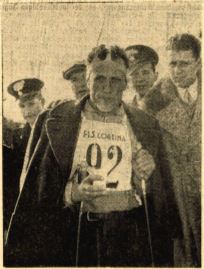
Aristide Compagnoni
Photograph by Ghedina
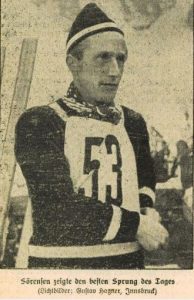
Randmund Sörensen
photogragh Gustav Hagner
In January 1941, the Ostmark (the name of former Austria) team had won the German relay title with Azzolini, Baur, Kasebacher and Demetz. In Cortina, Baur and Kasebacher competed individually, while Gstrein and Berauer joined Azzolini and Demetz to form the German relay team; Italy finished third, ahead of Germany. The newspapers of the two countries did not fail to highlight this result. The Völkischer Beobachter stressed the bad luck of the German relay team noting that after five kilometres of his leg, Demetz, had broken his left ski. For its part, Illustrazione italiana underlined how Aristide Compagnoni, on the lead leg, had brought Italy to the lead at the first change. This was the first time that a Central European team had accomplished such achievement. The “well-known” Demetz could do little to change the outcome and, in any case, Germany “had never been in the race”; a view echoed by Gazzetta dello Sport. Although Italy had ceded part of its forces to Germany, its international class had remained intact. A fact further underlined when the South Tyrolean, Perenni, claimed bronze as part of the Italian military patrol relay. The need for propaganda was satisfied; Italy, it seemed, kept the best fascists and the best men.
Article © Gherardo Bonini
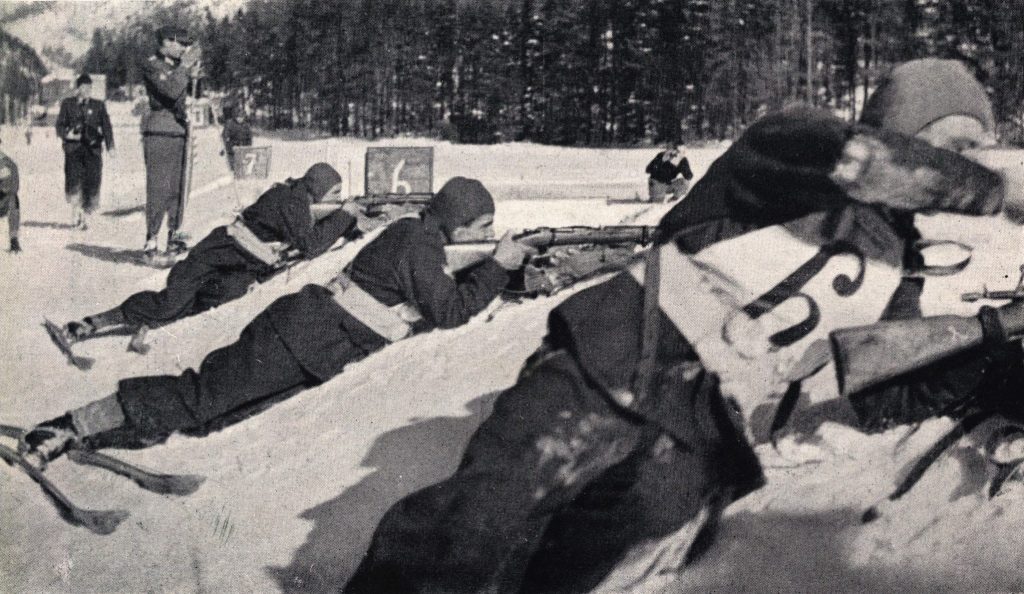
Italian Military Patrol

